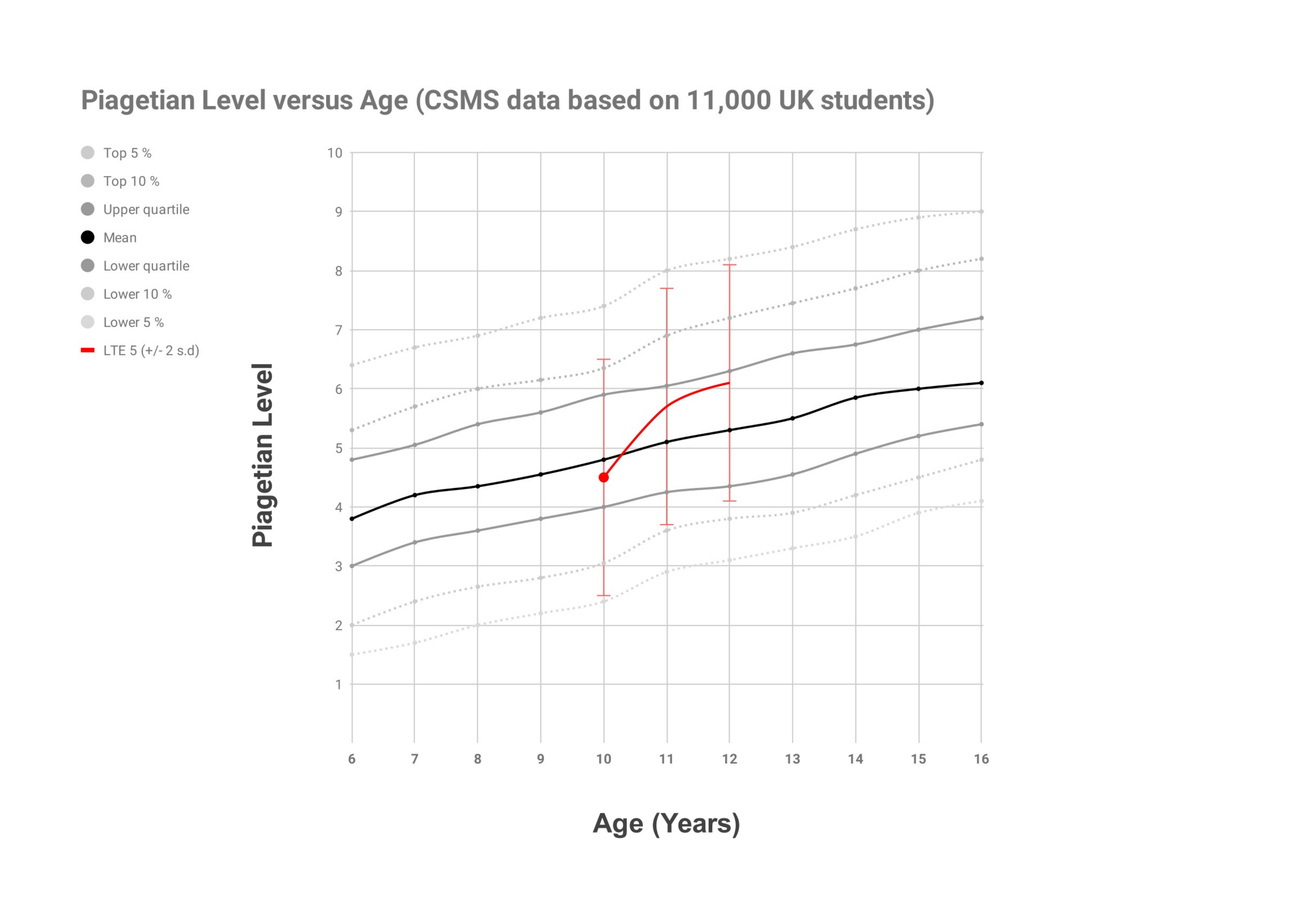Our action research on the effect of Let’s Think English (LTE) was carried out for a whole school year with grade 5 and 6 classes. We were all trained in the methodology by Michael Walsh, the co-Author of the LTE programmes. The lessons Michael wrote, their delivery and the associated training were all derived from the Cognitive Acceleration through Science Education (C.A.S.E) and Cognitive Acceleration through Mathematics Education (C.A.M.E.) programmes. All three programmes are now called Let’s Think. They are still based on the original methodology but many of the materials have been updated. There is a large active community involved in the further development of materials and training for all 3 programmes across all primary and secondary school ages up to 16.
The training we received was highly challenging, interactive and totally consistent with the pedagogy of LTE. It led to a highly pronounced culture of collaborative planning and in depth co-observation, feedback and team teaching. One memorable experience was when Michael demonstrated and then later debriefed the concept of teacher mediation of student reasoning. This was a breakthrough point for Teachers who already considered themselves experienced and fairly expert in developing thinking with their students. This is where the conceptual clarity of the aims of cognitive acceleration programmes gives the most subtle but transformative guidance. The reasoning patterns behind the lessons are the magnetic force that brings the compass of the teacher back to the important direction the discussions should take.
An outstanding result of this enhanced awareness of the craft, art and science of teaching was the training day where we applied our understanding to create a Let’s Think lesson. The way all the teachers worked together on the development of a lesson based on a short video called “Feathers” was inspirational. This lesson has been taught in our school many times and constructively commented upon by all the teachers involved in the project. We had the pleasure of presenting this lesson at a LTE Teachers network in Kings College last year. Michael facilitated a series of discussions with teachers spanning the primary age phases on how this lesson could be further adapted.
The original research always used Piagetian Science Reasoning Tasks developed by King’s College London to measure changes in cogntive development. These are based on the original clinical interviews conducted by Piaget and his co-workers. They were developed as interactive group tasks to track cognitive levels and subsequent gains across a representative sample of the UK school population in 1976. The changes in cognitive levels are then triangulated and corroborated by independent educational measures e.g G.C.S.E performance or SAT scores. We followed this design but used the ACER tests, as our students do not do SAT or G.C.S.E.
1)The Growth in Piagetian mean reasoning levels shown by the red line in the graph represented a 0.8 effect size (Cohen’s d) N= 59 with a p value of <0.01 for treatment group compared with the mean change blue line shown by a sample of UK students. This sample of N=11,000 was used for control measures in many cognitive acceleration studies.

2) We also used Australian Council for Educational Research (ACER) tests. These use the same scale and psychometric model as the PISA tests. Our students took Mathematical Literacy, Reading, Narrative writing and Expository writing. We used these tests to show the persistence of the cognitive gains and how they would have transfer effects to other subjects or domains more than a year after the start of the intervention. Our students took these ACER test in October 2016 and again in October 2017. For a small sample N=35 (due to student leaving or arriving after the pre and post ACER tests) we got these effect sizes compared to a very stringent control of the top 14 International Baccalaureate schools (N=865) performance on the same tests as reported by Tan and Bibby (2011).
All effect sizes (Cohen’s d).
The Expository writing had a p value <0.01 and Mathematical literacy had a p value of <0.10. (Ascertained by a twin tailed t-test)
Interestingly the growth shown by the lowest quartile of our research sample showed even higher effects on the 4 ACER tests. This effect on the least cognitively developed students has been consistently measured in previous cognitive acceleration research.
Note: that these are effect size gains compared to a group that has also grown in the expected trajectory for these leading schools. So the 0.4 Hattie hinge point is not really relevant here as he assumes 0.4 is the result of natural maturation, we have accounted for that in our calculations. Our results compare the growth between the two groups in the 4 domains covered by the ACER results.
These promising results demonstrate that our intervention in English led to success across cognitive domains like Mathematical Literacy as well as English competences. This research needs further follow up and replication with a wider sample size. This is in planning for the coming years in other International schools.
References
Tan, Ling and Bibby, Yan, “Performance Comparison between IB School Students and Non-IB School Students on the International Schools’ Assessment (ISA) and on the Social and Emotional Wellbeing Questionnaire” (2011)